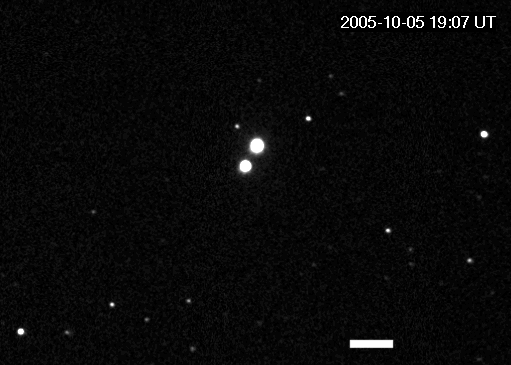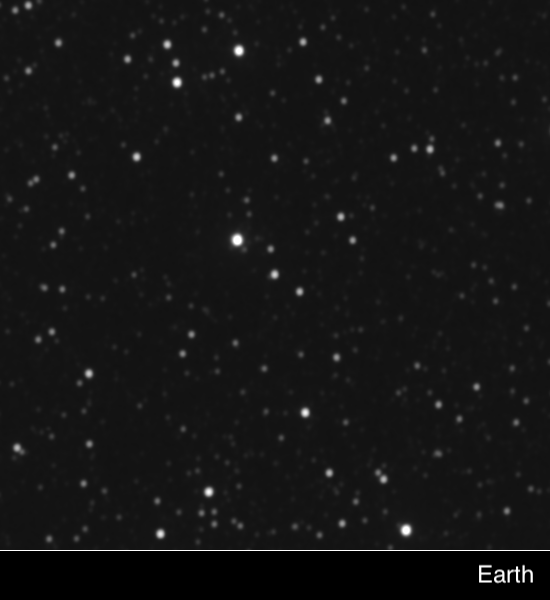[Originally published as the first part of Stellar Astronomy: Part 1 – Distance and Brightness]
Astronomy is the study of the physical universe beyond earth’s atmosphere. This includes objects like planets, nebulae, galaxies, moons, asteroids, comets, black holes, and, of course, stars. Stellar astronomy is the branch dealing specifically with stars — their distances, motions, compositions, and so on.
Modern technology has allowed us to discover so much about the stars and to share that information quickly with the world. You can look up just about any star on the internet and find all kinds of fascinating information based on good science: its size, composition, luminosity, distance, coordinates, and so on.
But you will also read information that is not accurate because it is based on antibiblical assumptions, such as the star’s estimated age and stage of evolution. Therefore, it is very useful to know something about the history of stellar astronomy to see how we know what we know and to discern what we really know from what is merely claimed.
Stars Are Distant Suns
It is amazing to think that those little points of light we see in the night sky are the same type of object as our sun, many just as bright, and some are hundreds of thousands of times more luminous.1 They appear tiny and much fainter than the sun because they are so much farther away. The sun is merely 93 million miles away from earth. The next closest star, Proxima Centauri, is 269,000 times farther away from earth than the sun is. So, it’s no surprise that stars look much fainter.
The idea that stars are suns is actually a fairly modern one. Most ancient cultures did not believe this. After all, it is not intuitive to think that a faint star might actually be as big and bright as the sun but millions of times more distant.
So, how did we discover that stars are suns?
The first historical record of someone proposing that stars are like the sun goes to Anaxagorus from Athens around 450 B.C. He incorrectly believed that the sun was a hot rock. But he correctly believed that the moon was a rock that shines by reflecting sunlight. And he correctly believed that stars were the same kind of object as the sun. However, his ideas were considered heretical by the Greeks, who believed that the sun was a god. Thus, his claims were not widely accepted.
Aristarchus of Samos (310–230 B.C.) revived the idea that stars are suns as a reasonable inference from his other discoveries. He correctly computed the distance to the moon using geometry and lunar eclipse observations, which allowed him to deduce the size of the moon relative to the earth. He also used geometry to compute the distance to the sun.
Although his estimate of the sun’s distance was not very accurate due to the limitations of observations at the time, it was enough to show that the sun was much farther than the moon and, therefore, much larger than the earth. This led Aristarchus to conclude that the earth must orbit the sun (heliocentrism), because he thought it would be ridiculous for the enormous sun to orbit the much smaller earth (geocentrism). That’s pretty insightful!
However, most other Greek scientists did not embrace the idea of heliocentrism and gave what seemed to be compelling evidence to the contrary. For example, if the earth orbits the sun, then why do we not feel an enormous wind? They also pointed out that if the earth orbits the sun, then nearby stars would appear to shift relative to more distant stars as the earth moves.
 This effect is called parallax. Parallax is defined as the shift in angle of a star as seen from earth at the two locations in the figure above. One location is when the earth is at a right angle relative to the star and the sun. The other location is when the earth is between the star and the sun. In practice, it is easier to compare the position of a star from when the earth is on opposite sides of the sun (perpendicular to the star’s position) and divide the angle by two to derive the parallax.
This effect is called parallax. Parallax is defined as the shift in angle of a star as seen from earth at the two locations in the figure above. One location is when the earth is at a right angle relative to the star and the sun. The other location is when the earth is between the star and the sun. In practice, it is easier to compare the position of a star from when the earth is on opposite sides of the sun (perpendicular to the star’s position) and divide the angle by two to derive the parallax.
This is the same method your brain uses to compute the approximate distance to an object based on the slightly different perspective between your left and right eye.
Yet, the constellations do not change shape throughout the year; we see no evidence of parallax.
Geocentrists argued that this shows that the earth is not moving. Aristarchus correctly answered this objection by supposing that even the nearest stars are so far away that parallax would be too small to be seen by the unaided eye. At such a distance, stars would have to be as bright as the sun for us to see their light. Thus, stars are suns.
Aristarchus was a brilliant man and well ahead of his time. But there were no telescopes at the time and hence no way to verify his suppositions. So, his correct ideas about the solar system were not embraced, and the Greeks and others continued to believe in a geocentric solar system for nearly two millennia.
Copernicus (A.D. 1473–1543) revived the idea of a heliocentric solar system. He pointed out that the retrograde motion of the planets (the fact that outer planets seem to move backward sometimes) would naturally be explained in a heliocentric solar system as the faster earth passes them. His ideas were published just before his death. They were controversial because the geocentric solar system of the Greeks was well-accepted at the time.
The invention of the telescope in 1608 revolutionized the field of astronomy. Galileo’s observations beginning in 1610 strongly supported heliocentrism. He discovered four moons that orbit Jupiter — proving beyond all doubt that not everything orbits the earth. His observations of the phases of Venus demonstrated that it must orbit the sun and not earth. Johannes Kepler was a contemporary of Galileo and gave further evidence of the heliocentric solar system using data collected by Tycho Brahe. The heliocentric solar system was gradually accepted over the next century.
But still, there was no observable parallax. Even with the aid of telescopes, no one could detect the shifting of nearby stars relative to more distant ones as the earth orbits the sun. If indeed heliocentrism were true, then stars must be farther away than anyone had suspected.
 The binary star 61 Cygni (the two brightest stars near the center) appears to shift relative to background stars in these two images taken seven months apart.
The binary star 61 Cygni (the two brightest stars near the center) appears to shift relative to background stars in these two images taken seven months apart.
Finally, in 1838, mathematician and astronomer Friedrich Wilhelm Bessel became the first person to measure and publish the parallax of a star. He discovered that the star 61 Cygni had a parallax of roughly 1/3 of an arcsecond (one arcsecond is 1/3600 of a degree). This corresponds to a distance of about 10 light years, or 59 trillion miles. Astronomers often use the parsec to describe cosmic distances. The parsec is defined as the distance of a star whose parallax is 1 arcsecond. (Parallax of one second of arc = parsec). One parsec is equal to 3.26 light years which is about 19 trillion miles.
The nearest star to the sun is Proxima Centauri. It appears to jump back and forth relative to the more distant stars in these two images. One image is from the earth and the other from the New Horizons spacecraft at about the same time. New Horizons was 4.4 billion miles (47 AU) away from earth at the time, so the difference in perspective is striking.
Proxima Centauri is 1.3 parsecs distant. The distance to a star in parsecs (D) is simply the reciprocal of its parallax in arcseconds (θ). D = 1/θ. For example, the bright star Sirius has a parallax of 0.37921 arcseconds, so its distance from the sun is 2.637 parsecs.
Modern ground-based telescopes can measure a parallax as small as 0.01 arcsecond. Below that limit, the parallax is too small to be accurately measured due to the blurring effect of earth’s atmosphere. This limit corresponds to a distance of about 100 parsecs.
The Hipparcos spacecraft (1989–1993) was able to measure much smaller parallax angles because it was above the earth’s atmosphere. It was able to measure stellar distances out to several hundred parsecs. The Gaia spacecraft was launched in 2013 and is still in operation. It can measure even smaller parallax angles and is therefore able to measure distances of stars up to 10,000 parsecs. Beyond these limits, astronomers must use other methods to measure the distance to a star.
Continued at Studying the Stars: Distances & Luminosities







